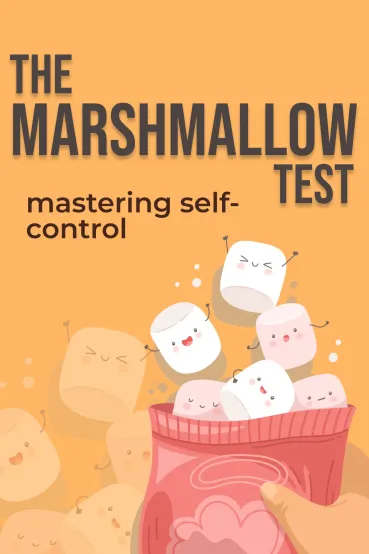
The Marshmallow Test
Brief Summary
In “The Marshmallow Test”, the author delves into the connection between self-control and a child's development. The book showcases the famous Marshmallow Test as a tool to assess self-control and investigates the influence of genetics and environment on this trait. It offers practical strategies to enhance self-control in children, providing valuable insights for parents and educators.
Topics
Key points
Key idea 1 of 8
The Marshmallow Test is a famous experiment. It examined children's ability to defer gratification. Children were allowed to select their preferred treat. The researcher informed the kids they could have it immediately, or they could wait for a while and get two treats. Subsequently, the experimenter exited the room, leaving the child alone with the snack placed on a tray in front of them. Some children couldn't resist the temptation and ate the treat right away. Others managed to distract themselves and waited.
Later on, the researchers provided the children with training on if-then plans. They did this to help the kids fight the urge to eat the snack. The training took place before the test. It required the children to devise a strategy for distracting themselves. For instance, if the child's hand moved toward the snack, they would start singing a song. Each time the children reached for the snack, they reminded themselves of their chosen distraction technique. As a result, they found it easier to wait.
Our self-control relies on two different systems in our bodies. One is in charge of our behavior. The other reacts to external stressors. The prefrontal cortex is the region of the brain where the cool system is located. It is responsible for self-control, decision-making, and planning. It becomes active when we need to exert control over our actions. The cool system develops during childhood. Young children struggle to resist the temptation of an immediate reward. Their actions are usually dictated by their reactive hot system.
Kids under four have difficulty using their cool system effectively. Yet as they grow older, their self-control improves. The cool system continues to develop during adolescence. Most individuals only possess a fully functional cool system once they reach adulthood. That is why many teenagers find it difficult to steer clear of substance abuse or consuming alcohol.
Children practicing distraction techniques teach their cool system to resist temptation. The cool system manages the task of self-control. It operates in conjunction with the hot system, which handles emotions and biological needs. When one system is active, the other becomes less active. The hot system, the limbic system, reacts quickly to arousing stimuli. When a child sees a marshmallow, the hot system instantly fuels a desire to eat it. This desire often overpowers a sense of patience or self-control. Therefore, the cool system is tasked with self-control.
FAQ
You may also like these summaries











